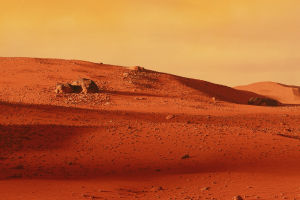Mars is the only terrestrial planet that can be clearly seen with a telescope from Earth. Through a telescope, Mars looks like an orange ball. As the seasons change, white polar caps appear at the north and south poles, with areas of alternating light and dark on its surface.
The red-orange appearance of Mars is due to the widespread distribution of iron oxide on the surface, and its red appearance is unique among celestial bodies visible to the naked eye.
Like Earth, Mars has diverse terrain, including mountains, plains and canyons. Mars is basically a desert planet with sand dunes and gravel on the surface. There are also differences in terrain size compared to Earth due to factors such as lower gravity. The topography of the northern and southern hemispheres contrasts sharply: lava-filled lowlands to the north and ancient highlands filled with craters to the south, separated by distinct slopes; interspersed with volcanic terrain and numerous canyons In the north and south poles, there are polar caps composed of dry ice (solid carbon dioxide) and water ice, and aeolian dunes are also widely distributed throughout the planet.
A moon orbiting Mars has confirmed that the giant crater on Mars was once a volcanic lake. The rover found it by landing on a delta where the sediment fanned by water. Although the 65-kilometer-wide crater is completely dry, it is a sign that ancient Mars was once wet.
This is the spectacle captured by the Mars rover as it landed on a delta where the sediment fanned by water. This huge Martian meteorite was once a volcanic lake, completely wet, and now it has dried up due to countless meteorite impacts. The right side of the crater is intact, but the rest is covered in debris from a larger crater formed by later violent impacts.


